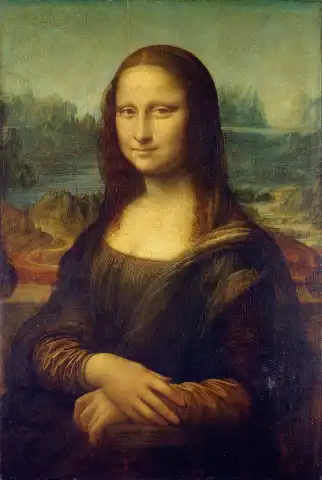

Hand painted reproductions of Kishida Ryūsei
Kishida Ryūsei: Master of Nihonga and the Modernization of Japanese Art
Kishida Ryūsei (born March 25, 1891 – died May 18, 1929) was a prominent Japanese artist known for his innovative contributions to the Nihonga (traditional Japanese painting) movement. A key figure in the early 20th century, Kishida blended the techniques and aesthetics of traditional Japanese painting with the emerging Western influences of the modern art world. His work is celebrated for its distinctive approach to portraiture, composition, and its seamless integration of Western and Japanese artistic traditions.
Early Life and Education
Kishida Ryūsei was born in Kumamoto, Japan, into a family with a deep appreciation for the arts. From a young age, he showed a natural talent for drawing and painting. His interest in art led him to the Tokyo School of Fine Arts (now the Tokyo University of the Arts), where he studied under some of Japan’s leading Nihonga artists. The influence of these mentors was evident in Kishida’s early works, as he adhered to traditional methods of brushwork and subject matter.
Kishida’s education was not limited to Japanese traditions. He was exposed to the works of Western artists, particularly during his studies in Europe. He spent time in France, where he engaged with modern European painting styles. This exposure to Western art movements, such as Impressionism and Post-Impressionism, had a profound effect on his work, influencing his approach to color, composition, and the depiction of light.
Style and Technique
Kishida Ryūsei is best known for his unique synthesis of Western and traditional Japanese painting techniques. While grounded in the classical methods of Nihonga, he infused his works with Western concepts of composition, color theory, and the emotional use of light and shadow. Kishida’s art is often characterized by a delicate balance between realism and abstraction, offering a modern reinterpretation of traditional Japanese subjects.
One of Kishida’s most significant contributions to Nihonga was his innovative use of color. He experimented with Western oil painting techniques, incorporating softer, more muted tones, which contrasted with the more vivid colors typically seen in traditional Japanese works. His portraits, in particular, are notable for their subdued palette and the way he used light to create depth and mood. His compositions often focused on a subject's inner emotion, rather than simply the external appearance, and this psychological depth became a hallmark of his portraiture.
Kishida’s brushwork was also exceptional. He employed fine, meticulous strokes typical of Nihonga, yet he was not afraid to experiment with freer, more expressive strokes when needed. His ability to blend these two approaches—precision with freedom—allowed him to create a style that was both classical and modern.
Themes and Significance
Kishida Ryūsei’s work was deeply reflective of his era, a time of rapid modernization and cultural exchange between Japan and the West. His paintings often explored themes of identity, modernity, and the emotional state of the individual. As Japan moved from the Meiji period into the Taisho era, artists like Kishida struggled with the tension between traditional Japanese culture and the influences of the Western world. His works captured this struggle by bridging the gap between East and West, and his contributions helped shape the future of Nihonga painting.
A key feature of Kishida’s work was his focus on portraiture. Unlike many of his contemporaries, who concentrated on landscapes or historical subjects, Kishida was drawn to the human form and the exploration of psychological depth in his subjects. His portraits reveal a deep sensitivity to the human condition, often highlighting introspection, melancholy, or contemplation. In addition to portraits, he painted still lifes and scenes of daily life, where he similarly explored the nuances of light, texture, and form.
Kishida’s contributions were instrumental in modernizing Nihonga. He was one of the first artists to embrace Western painting techniques while still respecting the traditional aesthetic values of Japanese painting. His fusion of these elements helped pave the way for the development of modern Japanese art in the 20th century.
Achievements and Recognition
Although Kishida Ryūsei’s career was tragically cut short by his early death at the age of 38, he left a lasting impact on the world of Japanese art. His work received significant recognition during his lifetime, particularly within the Nihonga community. His portraits, still lifes, and compositions were praised for their emotional depth and technical proficiency, and he became known as one of the leading figures of modern Nihonga.
Kishida’s paintings were exhibited widely in Japan, and he became a member of important art associations, including the Japan Art Academy. His works continue to be highly regarded in Japan today, and his influence is seen in the works of later artists who continued to combine traditional Japanese techniques with modern influences.
His contributions to Nihonga were recognized posthumously, and his works are held in several major Japanese art museums, including the Tokyo National Museum and the National Museum of Modern Art. Despite his short life, Kishida’s legacy as a pioneer of modern Japanese painting is firmly established.
Legacy
Kishida Ryūsei’s legacy is felt in the ongoing evolution of Japanese art. His work marked a critical point in the development of Nihonga as it navigated the challenges of modernization and Western influence. He was a key figure in shaping the trajectory of modern Japanese painting, influencing future generations of artists who embraced both Japanese traditions and Western techniques.
Today, Kishida’s works are admired not only for their technical mastery but also for their emotional resonance. His paintings continue to inspire artists and art lovers alike, offering a window into the complexities of modern Japan at a time of great cultural change. His blend of Western and Eastern techniques continues to serve as a source of inspiration for artists seeking to navigate the balance between tradition and innovation.
Where to Find Reproductions of Kishida’s Art
Reproductions of Kishida Ryūsei’s works, such as his intimate portraits and still lifes, can be found at POD, where collectors can purchase high-quality prints that capture the delicate beauty of his art. These reproductions offer a chance to experience the unique fusion of Western and traditional Japanese painting techniques that defined his legacy.
Imagine owning an original work of art by Kishida Ryūsei, one of the greatest artists in history. At POD we offer you the opportunity to make this dream come true. We reproduce Kishida Ryūsei's works down to the smallest detail, so you can enjoy them in your own home.
Our reproductions are made by experienced artists who use the best materials and techniques. We are dedicated to providing you with the highest quality works of art, which will bring joy and inspiration to your family for generations.




